Search
Products tagged with 'titanium'
View as
Sort by
Display
per page
00691 EXPERIENCE WITH TITANIUM HEAT EXCHANGERS IN REFINERY SERVICES
Product Number:
51300-00691-SG
ISBN:
00691 2000 CP
Publication Date:
2000
$20.00
07183 Corrosion Performance of Titanium Grade 38
Product Number:
51300-07183-SG
ISBN:
07183 2007 CP
Publication Date:
2007
$20.00
07244 Mitigation of Galvanic Corrosion in Seawater Piping Systems
Product Number:
51300-07244-SG
ISBN:
07244 2007 CP
Publication Date:
2007
$20.00
51315-5425-A Unique Explosion Case Involving a Titanium Reactor
Product Number:
51315-5425-SG
ISBN:
5425 2015 CP
Publication Date:
2015
$0.00
51317-9271-Bio-Functional High Performance Coatings of Titanium and Magnesium Alloys for Biomedical Applications
Product Number:
51317-9271-SG
Publication Date:
2017
$20.00
51317-9472- Characterization of Corrosion Behavior on Additively Manufactured Alloys
Product Number:
51317-9472-SG
ISBN:
9472 2017 CP
Publication Date:
2017
$20.00
51317-9537- Electrochemical Studies of Titanium-Boron Alloys in Physiological Solutions
Product Number:
51317-9537-SG
ISBN:
9537 2017 CP
Publication Date:
2017
$20.00
51317-9549- Corrosion Behavior of Niobium-Containing Titanium Alloys in Biological Solutions
Product Number:
51317-9549- SG
Publication Date:
2017
$20.00
51318-10863-Behavior of Titanium Exposed to Fresh and Spent Dilute HF Acid Well Stimulation Fluids
Product Number:
51318-10863-SG
Publication Date:
2018
$20.00
51318-10921-Titanium Alloy Stress Corrosion Resistance to Methanol Vapor in Hydrocarbon Gas Export Systems
Product Number:
51318-10921-SG
Publication Date:
2018
$20.00
51318-11116-Anodic and chemical oxidation to improve localized corrosion resistance of pure titanium
Product Number:
51318-11116-SG
Publication Date:
2018
$20.00
51318-11547-Development of New Titanium Products and Alloys for Geothermal Well Casing
Product Number:
51318-11547-SG
Publication Date:
2018
$20.00












